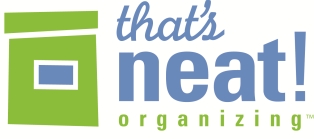An Organizer’s Magazine Mania
/Recently I was in my attic and noticed the tall skinny bookshelf filled with back issues of Real Simple magazine. Interesting…I had forgotten all about mystash of Real Simples.
As I flipped through the issues and looked at the dates, I realized that I had many of these when we moved several years ago. I had a few issues from as early as 2000 and 2001. Yes, I paid movers to move boxes of back issues.
I remember transferring most of this Real Simple magazine collection from the family room bookshelves to the attic, in order to make more room for books. So I was using the bookshelves in the attic for their intended purpose…but did I really need all these old magazines?
My answer this time was a resounding, “no.” Why?
- I had forgotten that the magazines were up there.
- I couldn’t recall a time when I had gone back to an issue to look at something.
- I guessed that I could find much of what I needed online now.
- I could use the shelves to store other things in the attic.
I couldn’t throw the magazines out cold, so I decided to take a quick look: I skimmed the front cover and table of contents to see if there was anything worth keeping.
I pulled out some articles and a few whole issues (focused on organizing ideas). I put the organizing-related articles/issues in my office. I also scanned other articles I wanted to keep into my computer; then I could recycle the paper.
Here’s a picture of my stack. The taller pile is the one I recycled. I should have had my tall first-grader stand next to the stack for perspective – I think the stack was higher!
In the end I recycled most of the magazines. Some editions were easy to get rid of, others were harder to part with. I was surprised at how much I was attached to the issue from the month my daughter was born, for example.
What are the lessons from my magazine mania?
1. Be ruthless in purging your reading material. You probably don’t need 5 years worth of back issues of your favorite magazine.
2. Use your storage space well. Can you store your favorite books on a shelf instead of old magazines or journals?
3. Use technology. Scan articles you want to keep to your computer. Use online indexes and websites for current information, not the back issues.
4. And most important: Look in your attic at least once a year; you may be surprised what you find.















